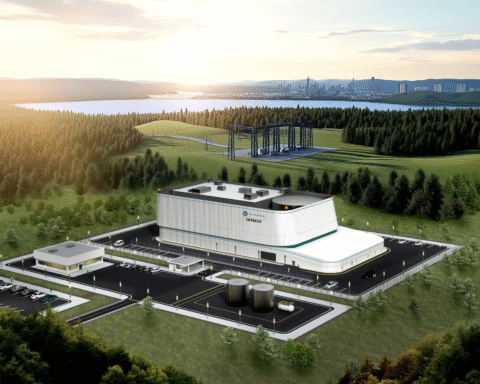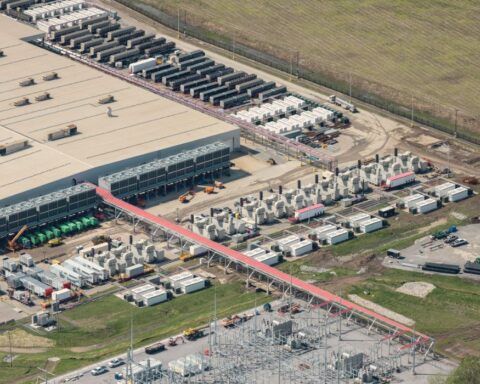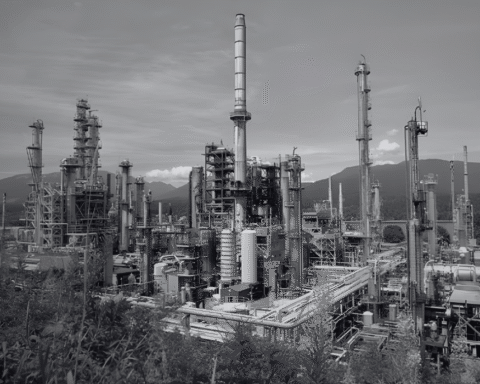The Canadian government provided at least $29.6 billion in financing to fossil fuel and petrochemical companies in 2024, with most of it directed toward the over-budget Trans Mountain pipeline, according to estimates from Environmental Defence Canada.
“That is more than the price of building out interprovincial electricity transmission infrastructure, which is estimated to cost $24 billion,” the Toronto-based advocacy organization writes. At least $2.4 billion was allocated for carbon-capture and hydrogen projects, which have struggled to attract private investment amid doubts about their business viability.
The costs associated with pollution impacts from the oil and gas sector are even higher, Environmental Defence estimates. Using the social cost of carbon as a benchmark, climate change, health impacts and reduced agricultural activity amount to about $53 billion in losses for Canadians.
The report is the latest round for an annual publication tracking government support for fossil fuels through grants, tax breaks, loans and loan guarantees. Much of the financing flows through Export Development Canada (EDC), a Crown corporation that provides low-cost financing to Canadian companies – or companies buying Canadian services and goods. Environmental Defence writes, as it has in past years, that a lack of transparency and public reporting makes it difficult to track these subsidies accurately.
The biggest subsidies went to the Trans Mountain pipeline
The available information shows that $7.53 billion of the total $29.6 billion went toward supporting companies developing liquefied natural gas projects, oil and gas exploration and production, and carbon capture. The rest was directed toward a single project: the Trans Mountain pipeline (TMX), a contested initiative that was completed last year, significantly behind schedule and over budget. The government purchased the pipeline in 2018 for $7.4 billion, but costs have since ballooned to $34.2 billion.
Through the many years that the oil sands industry advocated for the pipeline, the promise was that TMX would open up new markets for Canadian crude oil, particularly in Asia. But this week, Reuters reported that Crown-owned Trans Mountain Corporation has “downgraded forecasts for the amount of oil expected to flow through its system over the next three years.” Citing analysts, the news agency says those anticipated results “indicate unwillingness by oil companies to pay higher tolls the government-owned Trans Mountain has been charging customers to ship oil on the newly expanded pipeline.”
RELATED
The oil industry is selling carbon capture as a way to boost production
Fossil fuel subsidies are costing Canadian taxpayers way more than the carbon tax
What a nationwide grid network would mean for clean energy in Canada
The tolls have been an issue since mid-2023, when five of Canada’s biggest oil sands producers voiced concerns about how much of the project’s cost overruns they’d have to pay, as well as how the pipeline handles fees for late shipments, Bloomberg reported at the time. “The resulting higher tolls may make Trans Mountain a more expensive way to reach Asian buyers than shipping through the U.S. Gulf Coast,” and the news had Canadian fossils disappointed in the new pipeline taxpayers had built for them.
As recently as last fall, news reports had the flow of oil through TMX surging, but the debate over who would pay for the cost overruns intensifying.
A lack of clarity in federal financing for fossil fuels
This week’s analysis from Environmental Defence shows that TMX received $21 billion in federal financing in 2024, including a $1-billion loan guarantee from EDC in May and a $20-billion repayment of higher-cost debt and working capital support for Trans Mountain. The report suggests the latter sum is linked to $20 billion worth of loans from third-party financiers that were guaranteed by EDC, which EDC has repaid to hold the loan at a lower interest rate.
“The bottom line is the government has not provided nearly enough clarity to taxpayers to fully understand just how much taxpayer money is on the line – we don’t really know,” Julia Levin, associate director of national climate at Environmental Defence Canada, told The Energy Mix. “We’ve done our best to estimate it, and have given the government the benefit of the doubt on the latest transaction based on their word, but the government needs to provide clarity.”
The repayment does not result in TMX receiving additional loans but shifts the financial burden from private lenders to public funds. TMX and federal officials have said the transaction will reduce overall financing costs by $3.5 billion over six years due to EDC’s lower interest. But as Levin has previously remarked, the repayment remains a “very clear violation” of former finance minister Chrystia Freeland’s pledge in 2022 that the government would not spend more public funds on the project.
The debate over the accounting details may obscure a larger issue: regardless of the technicalities, the Canadian public is ultimately responsible for a project burdened by debt.
This article was first published on The Energy Mix. It has been edited to conform with Corporate Knights style. Read the original story here.







